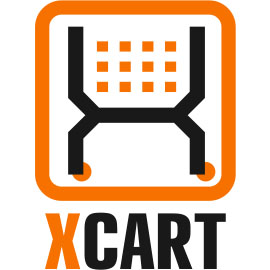
In this tutorial, we will show you how to install and configuration of X-Cart on your CentOS 7. For those of you who didn’t know, X-Cart is a search engine-friendly shopping cart software written in PHP with many features like WYSIWYG editor, easy-to-use web interface, order tracking, customer order history, real-time shipping calculation, printable invoices and receipts, built-in marketing tools like up-selling, cross-selling, discounts and more.
This article assumes you have at least basic knowledge of Linux, know how to use the shell, and most importantly, you host your site on your own VPS. The installation is quite simple and assumes you are running in the root account, if not you may need to add ‘sudo‘ to the commands to get root privileges. I will show you the step-by-step installation X-Cart 5 on a CentOS 7 server.
Prerequisites
- A server running one of the following operating systems: CentOS 7.
- It’s recommended that you use a fresh OS install to prevent any potential issues.
- SSH access to the server (or just open Terminal if you’re on a desktop).
- An active internet connection. You’ll need an internet connection to download the necessary packages and dependencies for X-Cart.
- A
non-root sudo useror access to theroot user. We recommend acting as anon-root sudo user, however, as you can harm your system if you’re not careful when acting as the root.
Install X-Cart on CentOS 7
Step 1. First, let’s start by ensuring your system is up-to-date.
yum -y update
Step 2. Install LAMP server.
A CentOS 7 LAMP server is required. If you do not have LAMP installed, you can follow our guide here. Also, install the required PHP modules:
yum install php-mysql php-gd php-ldap php-xml php-xmlrpc php-mbstring php-mcrypt curl zlib
Step 3. Installing X-Cart.
The first thing to do is to go to X-Cart’s download page and download the latest stable version of X-Cart, At the moment of writing this article it is version 5:
wget http://static.x-cart.com/xc5kit/x-cart-5.2.13-en.zip -O x-cart.zip
Unpack the X-Cart archive to the document root directory on your server:
mkdir -p /var/www/html/xcart unzip x-cart.zip -d /var/www/
We will need to change some folders permissions:
chown apache:apache -R /var/www/xcart/
Step 4. Configuring MariaDB for X-Cart.
By default, MariaDB is not hardened. You can secure MariaDB using the mysql_secure_installation script. you should read and below each step carefully which will set a root password, remove anonymous users, disallow remote root login, and remove the test database and access to secure MariaDB:
mysql_secure_installation
Configure it like this:
- Set root password? [Y/n] y - Remove anonymous users? [Y/n] y - Disallow root login remotely? [Y/n] y - Remove test database and access to it? [Y/n] y - Reload privilege tables now? [Y/n] y
Next, we will need to log in to the MariaDB console and create a database for the X-Cart. Run the following command:
mysql -u root -p
This will prompt you for a password, so enter your MariaDB root password and hit Enter. Once you are logged in to your database server you need to create a database for X-Cart installation:
CREATE DATABASE xcartdb; GRANT ALL PRIVILEGES ON xcartdb.* TO 'xcartuser'@'localhost' IDENTIFIED BY 'your-password' WITH GRANT OPTION; FLUSH PRIVILEGES; quit
Step 5. Configuring Apache web server for X-Cart.
We will create an Apache virtual host for your X-Cart website. First, create ‘/etc/httpd/conf.d/vhosts.conf’ file with using a text editor of your choice:
nano /etc/httpd/conf.d/vhosts.conf IncludeOptional vhosts.d/*.conf
Next, create the virtual host:
mkdir /etc/httpd/vhosts.d/ nano /etc/httpd/vhosts.d/yourdomain.com.conf
Add the following lines:
<VirtualHost YOUR_SERVER_IP:80> ServerAdmin webmaster@yourdomain.com DocumentRoot "/var/www/html/xcart/" ServerName yourdomain.com ServerAlias www.yourdomain.com ErrorLog "/var/log/httpd/yourdomain.com-error_log" CustomLog "/var/log/httpd/yourdomain.com-access_log" combined <Directory "/var/www/html/xcart/"> DirectoryIndex index.html index.php Options FollowSymLinks AllowOverride All Require all granted </Directory> </VirtualHost>
Next, edit the ‘php.ini’ file and add/modify the following lines:
### nano /etc/php.ini file_uploads = On allow_url_fopen = On memory_limit = 256M upload_max_filesize = 10M post_max_size = 20M safe_mode = Off magic_quotes_runtime = Off session.auto_start = 0
Save and close the file. Restart the apache service for the changes to take effect:
systemctl restart httpd.service
Finally, set the following secure file permissions:
chmod 755 /var/www/html/xcart/ chmod 755 /var/www/html/xcart/etc/ chmod 644 /var/www/html/xcart/etc/config.php chmod 644 /var/www/html/xcart/.htaccess
Step 6. Accessing X-Cart.
X-Cart will be available on HTTP port 80 by default. Open your favorite browser and navigate to http://your-domain.com/index.php or http://server-ip/index.php and complete the required steps to finish the installation. If you are using a firewall, please open port 80 to enable access to the control panel.
Congratulations! You have successfully installed X-Cart e-commerce. Thanks for using this tutorial for installing X-Cart e-commerce on your CentOS 7 system. For additional help or useful information, we recommend you check the official X-Cart website.